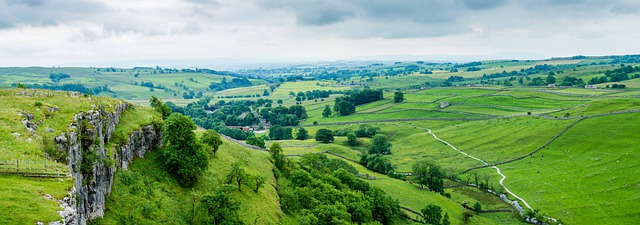Several leading conservation charities including the RSPB, National Trust and Wildlife Trust have voiced anger over the new government’s “destructive” approach to nature. The groups have urged their 8 million members to write to MPs demanding that key nature protections are not weakened and that environmental commitments made in the Conservative’s election manifesto are not abandoned.

The UK is already one of the most nature-depleted countries in the world and Liz Truss’s government threatens to worsen this. The new government has given itself the power to revoke or amend the 570 environmental laws inherited from the EU following Brexit.
This includes the Habitats Directive, which protects natural sites from damaging development, and which is now set to be weakened. At the same time, a plan to pay farmers subsidies based on their protection of nature instead of how much land they own is at risk of being delayed or scrapped altogether.
Under the Habitats Directive, development on a protected site will only be permitted if the proposed work will not damage its wildlife. In 2015, there were 900 protected sites in the UK, with 320 in England. Many are situated on privately owned land.
The protection of these sites can often be crucial. Two Welsh peatland areas have recently benefited from a restoration project. This has created over 12 miles of low mounds that retain water in peat bogs, which are a vital store of carbon.
To a government devoid of an appreciation for nature, these strict regulations may be considered a barrier to development. The recent renouncement of environmental laws has led to speculation that some of these protected areas may be situated within investment zones. Planning regulations within these zones are set to be relaxed to accelerate the construction of housing and infrastructure.
The Environment Act sets out rules that restrict how far environmental legislation can be amended. However, they will not come into force before February 2023, permitting unregulated urban sprawl until then.
Despite this, the initial guidance on investment zones does note that local consent will be a factor when identifying zones. Local activism may become a powerful tool for future habitat protection.
The ‘Brexit bonus’ for farmers
The Environment Land Management Scheme (Elms) was constructed to replace the farming subsidies of the controversial EU Common Agricultural Policy. While the current scheme pays farmers for maintaining land in “agricultural condition”, the Elms instead plans to compensate farmers for efforts to protect nature. The scheme will encourage farming practices that enhance biodiversity, protect watercourses, support woodland creation and store carbon.
Although in their infancy, there are several promising pilot schemes. The 23 Burns Farmer Group involves the cooperation of farmers in Britain’s northeast to promote farmland conservation. This will see the development of wildlife corridors on agricultural land, which will provide crucial habitats in the process.
However, the future of the Elms has been thrown into doubt following confirmation that the government was launching a review of its plans. The Welsh government has since maintained its commitment to plans similar to the Elms.
Even delaying the scheme will have consequences. A Green Alliance report shows pausing the Elms by two years will halve its carbon savings by 2035.
Yet a reversal of the scheme is strongly rumoured. The Department for Environment, Food and Rural Affairs (Defra) is instead considering an unconditional yearly payment made to farmers based on the area of land owned. Representing little more than a transfer of wealth, this will not do much to incentivise conservation.
Despite some internal opposition, the National Farmers’ Union has supported the continuation of an area-based payments scheme. It has long called for a reconsideration of the timescale of the Elms’ rollout as higher fertiliser, feed and energy prices, driven by the war in Ukraine, have increased farming costs.
In response to the backlash, Defra cited its Environment Act as evidence of a continued commitment to UK nature. The Environment Act, which was established in 2021, holds the government to several environmental improvement and protection measures.
It demands the establishment of an environmental improvement plan, requiring all local authorities in England to create local nature recovery strategies. It also states that a species abundance target must be set by 2030. While it commits the government to action, the Environment Act alone will not be sufficient to stimulate broader nature recovery.
Compensation schemes such as the Elms are an essential component in encouraging the participation of landowners in nature recovery. The Environment Act does not include a mechanism to deliver this.
This lack of incentive could be addressed by holding landowners accountable for failing to protect nature. Local authorities across England are now, for the first time, bound by law to identify areas for habitat restoration. But the law does not yet hold landowners accountable for failing to implement restoration on the ground.
The early signs suggest that the new government poses a serious threat to UK nature and so urgent action must be taken to preserve it. Defra’s approach to conservation has been slowly moving in the right direction over the past decade, it would be a shame to reverse it now.
Caitlin Lewis is a PhD student in the School of Agriculture, Policy and Development at the University of Reading.
This article is republished from The Conversation under a Creative Commons license.
